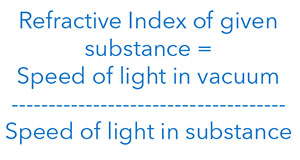Bellingham + Stanley offers one of the largest choices of digital refractometers in the world today. All refractometers are made and tested to the highest standards using Bellingham + Stanley's 100 years of experience in the field of refractometry; so whether you require a high-end digital touchscreen refractometer for measuring chemicals in a lab, or a handheld refractometer for measuring honey at a beehive you can feel confident you have the right instrument for the job. All refractometers are supplied with a unique serial number ensuring every instrument you buy may be traced to NIST and ICUMSA standards.
Digital refractometers from Bellingham + Stanley's cover many different applications. Specification varies from customer to customer which is why a range of refractometers have been designed; offering a wide measuring range up to 1.70 RI with touchscreen interface on the highest spec model.
Whilst ranges and applications may differ, build quality remains consistently high amongst Bellingham + Stanley’s RFM range. The same high quality touchscreen is implemented on all T-Series models giving a high definition user interface at your fingertips. All instruments are built with flat, easy-clean prism dishes to hold your sample, with any spills being dealt with by the ergonomically designed casing which allows samples to harmlessly drip away.
With USB connectivity and easy-to-use software as standard throughout the range, as well as a team of experts to support you before and after purchase, Bellingham + Stanley offers peace of mind as well as accurate, repeatable results. Click here to view our range of refractometers, or contact us today for more information, a demonstration or a quote.
How do refractometers work?
A refractometer is an instrument designed to measure an optical constant, which is a characteristic of the material being examined. This optical constant is known as "Refractive Index" and can be used to give valuable information about the material being tested.
The fundamental definition of refractive index is based on the speed of light. Light travels at a constant speed in a vacuum (approximately 300,000 km/second), but the speed is reduced when the light passes through any other medium. The ratio of these two speeds is the refractive index of the medium.

 When light changes speed as it passes from one medium to another, we call it "refraction". This principle can be seen clearly with the naked eye; for instance when looking at an oarsman on the river, where an oar appears to be bent as it passes through the water.
When light changes speed as it passes from one medium to another, we call it "refraction". This principle can be seen clearly with the naked eye; for instance when looking at an oarsman on the river, where an oar appears to be bent as it passes through the water.
Often refractometers measuring refractive index will convert the reading into a concentration measurement; typically of sugar (°Brix) for food applications or other easily useable concentration scales relative to the products being measured.
Flow-through Refractometry with RFM refractometer flowcell accessories
Flowcell accessories from Bellingham + Stanley provide your refractometer processes with a means of semi or fully automated sample application and prism washing, creating more efficient workflows for your laboratory or factory. For businesses that regularly measure volatile samples, RFM Refractometers with Flowcell accessories can reduce waste, and minimise exposure by eliminating evaporation from the measuring process.
Bellingham + Stanley’s Flowcell accessories offer inline multi-instrument configuration, useful within flavours, fragrances and essences applications. They can also provide connectivity to an auto-sampler for efficient automation to processes. View our range of flow cell refractometers and accessories here.